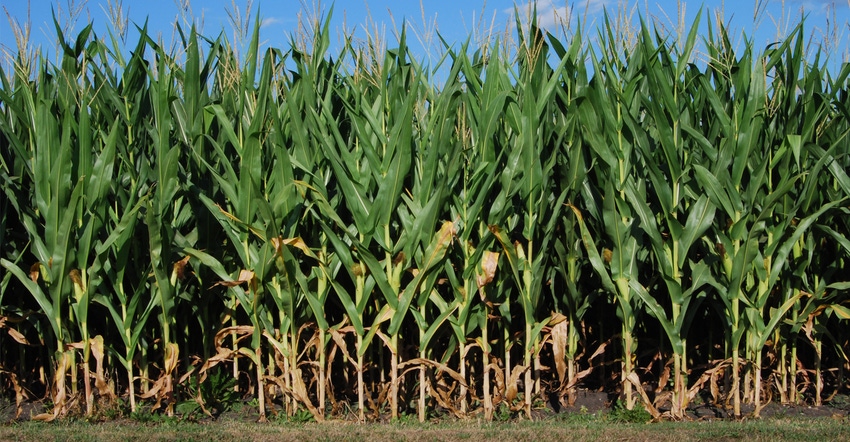August 22, 2017

Iowa’s farm real estate value, a measurement of the value of all land and buildings on farms, averaged $8,000 per acre in mid-2017, according to USDA’s annual survey, released in early August. That’s up $150 per acre, a 2% increase from a year earlier. There are two other categories in this survey. Cropland value increased 1% from last year to $8,100 per acre. Pasture, at $3,100 per acre, decreased $300 per acre from a year ago.
The USDA midyear report mirrors other surveys of real estate agents and ag bankers showing a stable or slightly rising average price for cropland in 2017. Real estate agents and bankers cited the lack of land for sale as a big factor in rising land prices.
Values down in neighboring states
While Iowa farmland was slightly higher, values eroded in several other Corn Belt states. Illinois farm real estate was down 1.4%, Indiana down 2.1%, Missouri down 1.5% and Nebraska down 1.7%. Like Iowa, farmland prices were up slightly in Minnesota and Wisconsin.
USDA also surveys cash rent. Cropland cash rent paid to Iowa landlords in 2017 averaged $231 per acre. Non-irrigated cropland rent averaged $231 per acre, down $4 from a year earlier. Irrigated cropland rent averaged $240 per acre. Pasture rented for cash averaged $54 per acre, up $2 from the previous year.
The Chicago Federal Reserve Bank surveys farmland values quarterly, and in August the bank released results of its latest survey. Farmland values in the Fed’s 7th District, which includes all of Iowa, increased 1% from a year earlier during the second quarter of 2017.
Looking forward on land values
This was the first year-over-year gain in three years, says David Oppedahl, economist for the Chicago Fed. Additionally, “good” agricultural land values in the district moved up 1% from first quarter to the second quarter of 2017, according to the survey of 186 ag bankers. District farmland values seemed to stabilize in the first half of 2017, despite lower prices for corn and soybeans relative to a year ago. Moreover, 76% of survey respondents expected agricultural land values to be stable during the third quarter of 2017, while 2% expected them to increase and 22% expected them to decrease.
The year-over-year changes in farmland values varied across different areas within states, particularly in Iowa. An Iowa banker wrote: “Lower crop prices and dry weather in our area have farmers talking about the difficulty in meeting production costs. Federal crop insurance will help this year.”
With the drought spreading in Iowa this summer, insurance payments will make up a portion of 2017’s income for a sizable number of the crop farms in Iowa and other states in the 7th District. Bankers surveyed affirmed the key role of federal crop insurance, as 89% said if there were lower participation in crop insurance, ag lending in their respective areas would be negatively affected.
While ag credit conditions in second quarter of 2017 again deteriorated relative to a year earlier, they did so more slowly than in recent quarters, says Oppedahl. Repayment rates for non-real estate farm loans relative to a year ago were still down during the second quarter of 2017, but less so than in the first quarter.
You May Also Like




